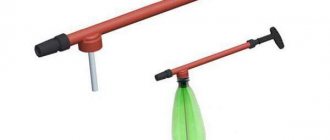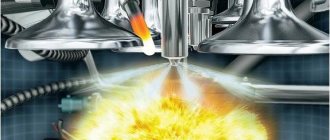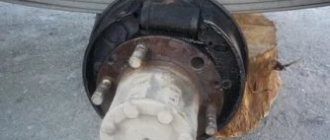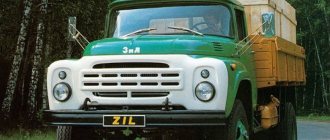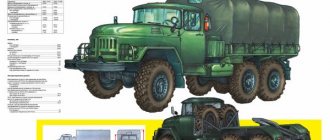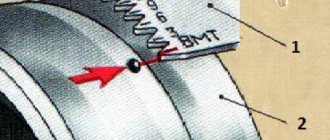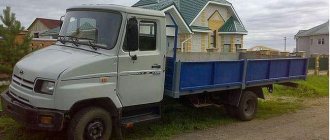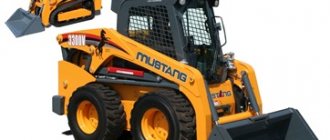The season of active gardening and gardening begins. If you haven’t sprayed your apple and plum trees yet, then early spring is the time to catch them before the parasites fly out and crawl out to damage the buds and subsequent fruits.
For minor work you can find the following Zhuk sprayers on sale. The quality is a little better than the Chinese ones, but ideologically they are from the same place.
This beauty is sold in many Garden-Vegetable Garden stores:
I’ll say right away that for spraying a dozen trees, the beetle is just the thing. Cheaper than serious units and better than an iron scoop “weighing ten tons.”
Pros:
- availability of repair kits and spare parts for sale
- light sprayer weight
- easy to disassemble
- pump (air) system and easy pump stroke
- presence of a belt
- sliding fire hose (telescope)
- adjustable tip
- anti-clog filter
Flaws:
- weak valve handle
Variants with flasks of different sizes are available for sale.
How the Zhuk sprayer works:
“Zhuk” is a brand under which 8 models of garden sprayers . With the help of the “Beetle” you can feed plants, protect them from pests, destroy weeds, and also carry out a number of household works (washing windows, walls, disinfecting, priming, etc.). Before use, it is important to read the operating instructions.
Muscular strength is required to operate the device. The method of carrying during work can be very different:
- devices with manual carrying during operation;
- sprayers that need to be placed on the ground during operation;
- devices with a shoulder strap;
- sprayers with a backpack principle of transportation (2 belts).
Based on their operating principle, they differ in:
- pneumatic. “Beetles” that have a pneumatic operating principle are designated by the letters OP;
For more information about the Zhuk sprayer, watch the video:
- hydraulic _ Sprayers are marked as OG.
Zhuk sprayers of both pneumatic and hydraulic types operate due to the pressure exerted by compressed air.
However, there are differences: hydraulic devices spray liquid pulses. It is thrown out when you press the hose lever.
When the lever is released, the ejection of liquid stops. There are models in which the key can be fixed so that the spray is continuous. Pump (pneumatic) sprayers build up pressure using a pump. Spraying begins after pressing the button.
Among the pneumatic models there are also devices with the ability to fix the key. All “Beetles” can create spray of varying intensity: from a stream to small droplets reminiscent of fog.
The same spraying is created by petrol backpack garden sprayers, Stanley pump-action sprayers, Comfort 12 liter battery garden sprayers, manual pump-type sprayers and for gardening.
Hydraulic
OG-301
The device is manual and works similar to a syringe. To assemble such a sprayer, you need a plastic bottle, because... He doesn't have his own tank. The device is connected to the bottle by screwing it onto the thread of its neck. Usually used to care for indoor flowers.
OG-301 sprays from a short distance - up to 40 cm. It does not have the ability to lock the button.
OG-112
The device is a backpack , designed for 12 liters of liquid. It has a filler neck and a telescopic fire nozzle. The sprayer is convenient for both right-handers and left-handers: the pump lever can be installed under any hand. The key is fixed if necessary.
Spray radius – up to 1680 millimeters. It is used for feeding plants, for treating large areas of forest, plantations, and gardens against pests.
Also, for processing and caring for a large area of land, you will need a Patriot walk-behind tractor, a Foreman, a Viking cultivator, a Swift, a lawn seeder and a cart for the walk-behind tractor.
Using a sprayer, you can water and irrigate plants, disinfect surfaces, clean, and extinguish forest fires spreading through the lower tier of the forest.
OG-115
Backpack sprayer, tank volume – 15 liters. It differs from the previous model only in the capacity of the tank.
Popular models
Today, the backpack sprayer Zhuk OG-112 and the tree sprayer Zhuk shoulder OP-207 have become the most popular:
Sprayer Zhuk 10l OP 207
The Zhuk 5L pump sprayer is constructed of plastic. Transported on the shoulder. Used for watering, fertilizing and plant protection. In addition, the Zhuk 5 l OP 207 sprayer is widely used for washing glass and facades, as well as other household work. Besides:
- The belt is adjustable, and the tray gives stability to the Zhuk 8 liter sprayer. The pump handle is textured to prevent slipping. You can always apply a key lock.
- The filler funnel is solid, so no additional sealing is needed. Thanks to the optimal width, there are no problems when taking liquid into the 10-liter Zhuk sprayer.
- A measuring scale is provided that allows you to control the remaining mixture in the tank.
The Zhuk sprayer whose operating instructions are extremely clear and simple, is as safe as possible for users. The safety valve prevents the formation of excess pressure.
Sprayer 12 l Zhuk OG 112 backpack
The hydraulic sprayer Zhuk 12 liters can be used with an extension. Plastic and aluminum are used for its manufacture. The outlet valve device allows you to adjust the jet range. If necessary, repairing a Zhuk sprayer with your own hands is quite quick and simple. Features also include:
- The Zhuk OG 112 sprayer is used over large areas and is characterized by high productivity.
- The Zhuk 12 l sprayer is used for irrigation, watering and fertilizing. The large tank makes it possible to use it for cleaning the area and eliminating ground fires.
- Just like the Zhuk sprayer OG 115, the presented model has a sieve for straining compounds and a mixing device.
If you want to get maximum performance, pay attention to the Zhuk battery sprayer. It is worth noting that the operation of domestically produced equipment is greatly simplified by the fact that spare parts for the Zhuk sprayer are always available and publicly available
Pneumatic
OP-205M
Manual, with 1.5 liter or 2.5 liter reservoir. The pump and spray device are located in the lid of the blow tank. The direction of the spray liquid flow can be controlled. Devices of this model do not have the ability to fix the key.
This sprayer is used where the amount of work is small: for spraying plants grown on window sills, in greenhouses, on loggias. Convenient for treating plants in small flower beds and for spraying shrubs.
OP-230
Manual , with 1.2 liter or 2 liter reservoir. Spray as a stream or as a mist.
OP-220
Tank volume: 5 liters or 7 liters. There is no belt . To operate, the device must be installed on the ground. The base of the sprayer of this model, compared to other Zhuk models, is wider, so it is more stable. The pressure pump handle is at the top and there is a safety valve.
The fire hose of the OP-220 is not of a telescopic type.
The device is used to spray shrubs, potatoes and other garden plants, low trees, and is used for household work.
OP-209
The model is available in three tank volumes: 4 liters, 6 liters and 10 liters. During operation, it is carried on a shoulder strap. The device has a filler funnel and tank - one whole. There is a safety valve.
Read also: Natural and synthetic rubber
The pump handle is located at the top; the button responsible for spraying can be fixed in the working position. Fire nozzle of telescopic type.
Areas of application for this type of sprayer: caring for garden plants, shrubs, small trees, and housework.
OP-207
Tank volume (options): 5 liters, 8 liters, 10 liters. Unlike the OP-209, the filler funnel of the 207 model is made separately from the tank; other characteristics, as well as the areas of application of models 207 and 209, are the same.
Types and models of sprayers
Today, the assortment of Cycle LLC includes:
- 15 models of garden sprayers;
- aluminum and plastic fire nozzles for them, telescopic and non-telescopic, including universal models with a set of adapter nuts;
- repair kits for sprayers, including valves, compression and sealing rings, swirl rings, nuts, cuffs and other spare parts;
- herbicidal nozzles for fire nozzles.
The Zhuk brand produces exclusively non-motorized sprayers powered by muscle power.
The company does not produce battery-powered, gasoline-powered or garden sprayers.
They can be divided according to the following criteria:
- according to the principle of operation - pneumatic (OP) and hydraulic (OH);
- according to the method of carrying during plant processing, depending on the displacement: manual garden sprayers that require installation on the ground during operation, with one shoulder strap (shoulder) and with two shoulder straps (backpack).
The action of both hydraulic and pneumatic sprayers is based on compressed air pressure. But in hydraulic spraying, the spray is pulsed; the liquid is released immediately when you press the lever (the nozzle button) and stops when it is released. More complex models provide the ability to lock the key for continuous spraying.
In pneumatic (pump) models, pressure is first built up due to the reciprocating movements of the pump-pump, and only after that is spraying possible by pressing the spray button. Also, a number of models provide the possibility of continuous spraying due to the locking of the key.
Hydraulic sprayers include the following models:
- OG-301, a manual syringe sprayer, the only model without its own liquid reservoir, is equipped with a tube and is used together with a standard plastic bottle after screwing it onto its neck. It is especially convenient for caring for indoor plants, as it allows spraying from a close distance (10–40 cm). The ability to lock the key is not provided;
- OG-112 and OG-115, backpack sprayers with a tank volume of 12 and 15 l, respectively. They have a filler neck and a telescopic fire hose. It is possible to install the pump lever under the right or left hand and fix the fire nozzle key. The range of application is as wide as possible.
Models of pneumatic sprayers "Zhuk":
- Manual - OP-205M with a volume of 1.5 and 2.5 l, OP-230 with a volume of 1.2 and 2 l. The pump and sprayer are built into the blow tank lid, and the spray direction can be adjusted. The key is not fixed; it must be held manually. They are used primarily for small volumes of work, processing indoor plants, seedlings, in greenhouses and greenhouses, on balconies, for caring for small flower beds and shrubs;
- OP-220 – models with a displacement of 5 and 7 liters, not equipped with a belt. They need to be placed on the ground when spraying and have a wider base than other models for added stability. The pump handle for pressurizing is located at the top, there is a safety valve, and a non-telescopic fire nozzle is used for spraying. Can be used for spraying shrubs, tall garden crops (for example, potatoes) and not very tall trees, as well as a number of household works;
- OP-209 with a volume of 4, 6 and 10 l, OP-207 with a volume of 5, 8 and 10 l - shoulder models with one belt, with a filler funnel (in the OP-209 line it is separate, and in the OP-207 it is integral with the tank ), safety valve. The pump handle is located on top, the spray key can be fixed, and the sprayers are equipped with a telescopic fire hose. The scope of application is the same as for the OP-220 models.
Any model of the Zhuk sprayer creates a fine-droplet spray and provides the ability to adjust the spray pattern, from a narrowly targeted jet to diffuse fog.
How to assemble
How to assemble a pneumatic one with your own hands
First we assemble the fire hose . The telescopic rod is screwed on one side of the handle, the hose on the other. The intake tube must be inserted into the hole on the tank. The length of the tube can be adjusted. The hose nut must be screwed onto the thread as far as possible, but manually.
Having connected the fire hose to the tank, we fasten the belt to the tank loops using the buckle axis. We check whether the safety valve works by lifting it up several times. It works if it moves freely. We take the pump by the handle, unscrew it and fill the sprayer tank with the liquid necessary for operation.
A potato planter is a must-have for your summer cottage. Here you can learn how to make one yourself.
The production of mini tractors and other small equipment is actively developing throughout the world. Here you will find all the information about mini tractors made in Belarus.
Kamaz is the most famous and sought-after Russian dump truck. Kamaz 6520 is a new universal truck.
Keep in mind that the volume of liquid poured should be 1 liter less than the volume of the tank. The pump is screwed on and tightened to the limit so that its connection to the tank is airtight.
Hydraulic
We assemble and connect the fire hose. To operate with the right hand, a shaft is installed . A washer is put on it. A cotter pin is inserted into the shaft hole. It is fixed by securing the shaft to the pallet. A washer is put on the connecting rod inserted into the hole in the pump assembly. The connecting rod is secured with a cotter pin.
Next, install the lever (on the shaft and connecting rod), washers, and cotter pins. We assemble the belt and connect it to the sprayer. To operate with your left hand, the sprayer is assembled in the same way, but the pump assembly and the filling assembly of the device are swapped.
Patriot PT 415WF-12 (from 10 thousand rubles)
Patriot PT 415WF-12. Photo: yandex.market.ru
Designed for spraying fertilizers, applying insecticides, killing insects and watering, and can also be used for dispersing seeds. The device is convenient to carry over the operator's shoulders. Control of engine speed and solution supply is carried out with the left hand without stopping work using the handle on the body.
Characteristics
| Type of carrying | knapsack |
| Device type | petrol |
| Volume of the tank | 14 l |
| Solution consumption | 0.11 m³/h |
| Tube type (nozzle) | long-distance spray |
| Power supply | No |
| Battery capacity | No |
| Weight | 12 kg |
Advantages and disadvantages
Ease of management, for large farms
Price
show more
Garden pruners
A must-have tool for every gardener
User manual
Pneumatic
Only filtered liquids and substances that are soluble in water without sediment can be poured into the sprayer tank. Do not use acetone, organic solvents, or petroleum industry products as a spray liquid. When working, you should adhere to the following rules:
- Before use, use a pump to create sufficient pressure in the tank for operation. Excessive pressure is relieved by a safety valve;
- select the spray type by rotating the dispersion nut. Press the spray button with your thumb. Liquid should not leak out from under the nut;
- to make the spray of liquid continuous, if the device has such an opportunity, move the key to the position in which it will be fixed pressed;
- the work is finished - return the key to its original position;
- raise the safety valve;
- If spraying is completed and the chemical remains, you need to neutralize the product as recommended by its manufacturer. For example, pesticides are neutralized with caustic alkali (5 percent solution);
- We wash the sprayer using water and detergent and press the fire nozzle button several times. At the final stage, we fill the tank with clean water and again work with the fire nozzle key. The dispersion hole must be free of contamination;
- We free the device from water and dry it.
Hydraulic
- Spraying liquid is poured into the tank and the lid is screwed on;
- the device is worn on the back;
- adjust the length of the fire hose tube (by loosening the nut, you can make the length of the tube comfortable, and then tighten the nut again);
- press the lever at least 5 times , after which we begin work by pressing the spray button;
- select the type of torch by rotating the dissipating nut;
- if necessary, fix the key in the working position. To ensure stable spraying of liquid, you should periodically operate the pump lever;
- At the end of the work, we make sure that there is no pressure in the pump assembly. We neutralize the chemical remaining in the tank and rinse the device with clean water.
Description and design features
The Zhuk garden sprayer has a simple and easy-to-use design.
This device is used for:
- spraying insecticides, repellents, fungicides on the leaves of potatoes, fruit trees and berry bushes;
- applying liquid fertilizers;
- uniform watering;
- prevention of powdery mildew and other serious diseases.
Sprayer "Zhuk"
Liquid is poured into the device reservoir. When the compressor starts operating, liquid under high pressure flows from the reservoir to the sprayer, and then comes out in uniform portions. The pressure can be adjusted depending on the needs of a particular crop for moisture or fertilizing.
The insecticide solution is supplied under powerful pressure, the stream knocks insects off the bushes, and the beetles die as the toxic substances penetrate deep into the soil. The most important thing is that not only the beetles die, but also their larvae - the main pests of potatoes, tomatoes and other crops of the nightshade family. Also, many summer residents have adapted to use this technique for watering roses and low-growing berry bushes.
Attention! Reviews from summer residents indicate that this particular sprayer is most effective in combating the main “scourge” of potatoes - the Colorado potato beetle.
Care and rules for its use
Pneumatic device
- the sprayer can only be disassembled if it is not under pressure;
- the compression ring, pump body, if the device is used every day, must be lubricated at least once every 30 days . The lubricant must be flexible;
- Lubrication is also necessary if the pump does not pump or the piston moves with difficulty. To disassemble the pump, unscrew the nut, remove the bushing and piston from it. When assembling the pump, be careful when installing the compression ring;
- You need to make sure that the safety valve is clean, otherwise it will leak air. You can remove the valve from the tank, but you cannot disassemble it yourself;
- the hose should not bend too much, otherwise kinks will appear on it;
- The sprayer must not be dropped and great force must be applied when pressing the pump lever. You cannot place weights on the tank or stand on it. All this can damage the device.
How to use hydraulic
- Maintenance every month: tightening connections where there are threads, rinsing the tank with water, applying grease to the O-rings;
- The rules for using the device are similar to the rules for using a pneumatic sprayer.
Read also: GTSh graphite heat-resistant lubricant for wide application
Composition of the repair kit for the Zhuk sprayer
The Zhuk backpack sprayer, like any other pneumatic equipment, breaks down quite often, and it is not always possible to repair it at home. To repair the device yourself, you will need a repair kit for the sprayer. You also need to have a diagram of the device in front of your eyes. The kit can be ordered on the official website of the manufacturer.
Manual garden sprayer
As a rule, a standard repair kit is a compression ring, complete with related accessories in a sealed, sealed package. Depending on the cost of the repair kit, the kit may additionally include:
- hose;
- spray;
- fasteners;
- safety valve.
Important! Before installing the compression ring, you must first lubricate it, then it will not stick. This is done so that the material from which the ring is made does not deform. Do not store the repair kit in the sun or on a window facing the sunny side.
Repair of sprayer malfunctions
There may be several reasons for a pump malfunction (does not provide pressure to the container):
- The rubber cuff on the piston is worn out, the fit to the walls of the cylinder of the pump itself is loose.
- the holes at the outlet of the cylinder are clogged, i.e. pressure is not supplied to the container.
- pump valve is faulty.
- there is no piston itself.
If there is no repair kit, then we leave the old cuff in place, and to make it fit more tightly to the cylinder wall, we place a steel ring . We make it ourselves according to the diameter of the piston from steel wire, so that the ring presses the cuff to the cylinder walls.
We fix the ring with a plastic washer (also homemade). The gap from the edges of the washer to the cylinder walls is approximately one millimeter. The washer will be inside the cuff and will hold the ring. We fix the washer with a regular wood screw, we screw it into the piston itself.
We lubricate the cuffs with lithol grease to increase the effect and moisten them with water so that the lithol does not stick so much to the cylinder walls. We check whether the piston has become tighter. If yes, but pressure still does not flow into the container, consider the second option.
The holes at the cylinder outlet are clogged. We clean them with regular wire if you have a simple pump. If the hole is ball-shaped (valve), perhaps the spring that pressed the ball is “tired” and does not press the ball tightly to the hole. Or debris has accumulated (remnants from the old cuff), which does not allow the ball to fit tightly.
In order to fix it, we disassemble the not so tricky device. If necessary, remove blockages and replace the spring. It is advisable to find a similar native one. We collect and check. After such health procedures, the pump should work.
Advantages and disadvantages
Of course, an important advantage of the Zhuk sprayers will be their low price, which anyone who wants to take care of their garden can afford. The cost, of course, depends on the volume, but we can say with confidence that it will not exceed 700 rubles. Due to the uncomplicated and simple design, the risk of breakdown of Zhuk sprayers is extremely low. Even if something suddenly happens to the device, you can always purchase individual parts, replacing which will restore the mechanism of action.
Many gardeners note the ease of use of the Beetle. First of all, they talk about comfortable straps. They are made of durable nylon thread, so they can withstand a weight greater than the sprayer itself and the liquid in it. However, not everyone likes the distribution of the load, that is, they note that it is not possible to distribute the weight of the sprayer over the entire spine. The material used for the body of the device is a high-strength polymer, which does not allow the device to be exposed to any influences from nature or chemicals used in the garden. This material easily tolerates changes in temperature without undergoing changes.
People respond well to the ease of adjusting the pressure. The U-shaped handle is so practical that the hand does not get tired at all while working. And to create the pressure you need, you will spend a few minutes.
Does not work
The main elements of a standard garden sprayer are an engine (gasoline, electric, battery) and a pump. Additional parts - a reservoir, a hose and a set of nozzles of various configurations, a backpack mount, etc. Different types of sprayers may have different types of problems. We suggest considering the following types and most common cases of breakdowns:
1. Manual backpack. It's the easiest to deal with. The problem can only be in the mechanical part.
- Leaking - it is necessary to replace the rubber seals;
- If it pumps poorly, the pump may have become unusable and needs to be replaced (or buy a new hand sprayer).
2. Battery-powered sprayer . Detecting a breakdown is also not difficult. Frequent cases of failure:
- Does not charge - look at the charging connector, clean it. Water could have gotten in there or the charger itself might be damaged, then you need to replace it;
- Discharged - needs to be charged. If during charging there is no desired effect, then the battery needs to be changed;
- Sprays poorly - if the battery charge is not minimal, then there are problems with the pump or the sprayer needs to be cleaned.
3. Motorized sprayer . It is brought into working position quite simply - with a manual starter. Each device comes with instructions that detail the stages of assembly, preparation for launch, and the launch itself. Follow it step by step in order to correctly assemble and configure the gasoline product. List of problems that may be encountered during the operation of a gasoline sprayer:
- Idling is a common mistake when running in gasoline sprayers. For proper further operation of the engine, we recommend contacting a service center;
- A completely new sprayer may not always start from the first pull of the starter, so it is necessary to perform this action several times;
- If the engine accidentally stalls during operation, one option is to check whether there is enough gasoline. If it’s not enough, you need to fill the tank almost completely or unscrew the spark plug and clean it of carbon deposits.
Read also: Three-phase electrical wiring diagram in a private house
Main selection criteria
Before considering the rating, let’s touch on the main criteria for choosing a garden sprayer:
- Capacity and weight The sprayer reservoir can be from 500 ml to 20 liters, which determines how often you will have to stop the process and refill the container. But the larger the tank, the harder it is to carry, especially in a spacious garden area.
- Length of fishing rod and hose With a short flexible hose of 1 m, the sprayer will always have to be held in your hands or on your shoulder. The length of 2-3 m allows for manipulations while leaving the device on the ground. A 40 cm fishing rod is only suitable for bushes and beds. To spray tree crowns you need a rigid tube 1.0-1.5 m long.
- Pump rod and nozzle materials The durability of the product depends on the materials used. Plastic elements will last for several seasons. The iron rod and nozzle will last up to 10 years.
- Tank material The walls of the tank are exposed to chemicals, so the container should not be made of soft plastic. It is also advisable to choose a translucent tank so that you can see the liquid consumption.
- Adjustment capabilities The presence of a valve or ball valve on the fishing rod allows you to set the throughput and regulate the flow of the substance.
- Equipped with nozzles Additional nozzles included will help you use the sprayer for whitewashing tree trunks and washing cars.
- Fastening loops. If the device is heavy, it is important to pay attention to the loops to which the belts are attached. They must be thick to withstand the load, otherwise, once they break off, mobility with the sprayer will be significantly reduced.
Doesn't spray
The most basic thing that happens if the sprayer does not spray the liquid well is that the individual pipes through which water passes to the spray nozzle become clogged.
- The pump is clogged - open the unit, clean it, if that doesn’t help, replace it;
- The hose is damaged (dry) - replace it;
- The hose is clogged or there is an air lock in it - clean it and check its tightness;
- A clogged nozzle is the most common occurrence. The fact is that tiny particles of chemical solution and dirt easily clog the nozzle holes (as well as the hose). Then spraying becomes difficult. You need to relieve the pressure using the safety valve, and then thoroughly rinse and clean the nozzle under strong water pressure, or “blow out”. You can also carefully remove dirt from the holes with a needle.
This problem can be avoided by washing the attachments after each use with warm, soapy water.
Processing speed, boom height and working fluid consumption rate
When determining the optimal processing speed and the rate of consumption of the working fluid, it is necessary to take into account the target objects on which the working solution is deposited, the phase of crop development and weather and climatic conditions (solar insolation, temperature, relative humidity, wind speed, etc.). The operator’s task is to get the product onto the target objects as much as possible.
In order to maintain the biological activity of the soil herbicide, it is necessary to distribute it evenly when applied. If the plowed layer of soil is thin and the soil is lumpy, it is likely that after the clods of soil are washed away by rain, areas that have not been treated with herbicide will appear on the field. To prevent this from happening, it is necessary to achieve an optimal droplet coverage density (20–30 pcs/cm²).
Based on this criterion, the flow rate of the working fluid with the correct choice of sprayer (with medium-disperse spray) should be at least 100 l/ha. However, with increased wind speed (4–5 m/s) and sprayer speed (over 16 km/h), the selected parameters may lead to a decrease in treatment efficiency. In order to minimize these risks, it is necessary to reduce the speed to 10 km/h, the operating pressure to the minimum permitted, the boom height to 40–50 cm and increase the flow rate of the working fluid to 150–180 l/ha.
At a constant wind speed of 5–7 m/s, it is recommended to use injection sprayers with a working fluid flow rate of at least 200 l/ha.
Spray rates when applying post-emergence herbicides are limited by crop plants. The higher the speed, the more herbicide will be deposited on the crop itself. This can lead not only to a decrease in the effect of the herbicide on weeds, but also to a depressing effect on the cultivated plant (phytotoxicity).
To carry out post-emergence herbicide treatments, the spraying speed should not exceed 12 km/h, since an increase in speed will lead to a decrease in the penetration of the working fluid to the weeds and soil, especially when carrying out late herbicide treatments (boot phase in cereals). An exception may be cereals, where in the early stages of development (2–3 leaves in wheat), the processing speed can be increased to 14–16 km/h.
Sprays poorly
If your sprayer seems to be working, but suddenly begins to “sneeze” and spray with great difficulty, and with constant pumping there is little effect:
- First of all, thoroughly clean the nozzle and hose. Please note that at the very end (where the liquid sprays) the nozzle is divided into two parts. They need to be separated and washed separately;
- If that doesn’t help, then unscrew the valve box and inspect everything inside;
- If the problem with the sprayer is solution leakage, check all the fastening elements of the tubes to the hose and to the sprayer;
- Everything was tightened up perfectly, but the problem remained. This means the problem is something else - the gaskets or o-rings are deformed. They wear out quite quickly, especially low-quality ones. If they are cracked, they need to be replaced. If they just moved out of place, install them as expected;
- Sometimes the problem is not in the gaskets, but in other elements - seats, valves, springs. If they are defective, replace them with new ones.
Factors affecting spray quality
- Dispersity of the solution. For vertically growing crops, such as grains, large droplets that easily penetrate deep into the stem stand are optimal. For broadleaf plants such as potatoes, a fine mist is more suitable. Large drops are not able to reach the lower tier.
- The thickness of the coating of the treated surface with the pesticide solution. For herbicides, the density should be no more than 20–30 drops/cm², for insecticides and fungicides no more than 50–60 drops/cm². For systemic herbicides, uniformity of coverage is not very important; for contact preparations, maximum surface coverage is necessary.
- Stable, uniform application of the solution along the working width of the boom and along the length of the headland. The unevenness should not exceed 25% of the average value. Untimely replacement of nozzles can lead to an increase in the coefficient of variation up to 60%, while the norm is 3–6%.
- Accurate dosage of working fluid.
- Wind drift of mortar. When the wind increases, it is necessary to increase the droplet size to reduce drift.
Bleeds air
A very unpleasant surprise - in the midst of work, the sprayer begins to leak air behind you.
Inspect it, there may be the following reasons:
- Loose connections. One loose fastener is enough for air to start escaping. Try to fix them tightly;
- The membrane is not fully stretched. The function of the membrane is to allow air into the reservoir with the solution and not let it out back. If it does not hold air, it means it has moved off the pin. Install it in place tightly and completely. Lubricate with a little oil, because the operation of the pump depends on the elasticity of this element;
- If a crack appears on the membrane, replace it;
- The sealing cuffs in the pump have moved or failed. Correct them or replace them with new ones.
The influence of droplet size on their sedimentability
Droplets smaller than 50 microns behave like an aerosol. You should not expect contact with the leaves, as the wind and rising air currents will blow them aside or hold them in the air until they evaporate completely.
Size 150-200 already allows drops to settle on the leaves and penetrate very well into the crown of vegetation. The influence of drift due to wind and evaporation losses is high.
The optimal size is 200-400 microns, since it is this size that settles well on the leaves and lingers on them. This size is much more resistant to wind drift. Drops larger than 400 microns are already susceptible to rolling off the sheet. Although drops up to 800 microns are also suitable for fuzzy potato leaves.
Doesn't pump air
Many models of sprayers have this trick: their chemical tank has a volume of 5 liters, but only 3 liters of chemicals can be poured into it. Why? Yes, because air is then pumped into the tank. Often beginners encounter a similar problem - they pour the solution, but the pump does not pump. Just drain some of the solution so you can pump air into it. But this is the simplest thing that can be. In other cases, the following problems may occur:
- The nozzle is clogged - you need to clean it as previously recommended;
- The oil seal is positioned incorrectly, change its position;
- Water is seeping through the pump cover - try tightening the cover more tightly;
- Overheating - place the unit and let it cool;
- The cuffs on the pistons are worn out - replace them with new ones.
Basic spraying parameters
| Working fluid flow | |
| For herbicides, l/ha | 200 |
| For fungicides, l/ha | 300–400 |
| For insecticides, l/ha | 300–400 |
| The deviation of the actual flow rate of the working fluid should not exceed 5% from the specified one. | |
| Sprayer speed, km/h | |
| For crevice sprayers | 3–5 |
| For injection nozzles | 7–8 |
| When applying soil pesticides | up to 16 |
Increasing the speed of the sprayer increases the turbulence of the outgoing flows, which reduces the controllability of the spray torch. Therefore, carrying out processing at high speeds requires the use of special engineering solutions.
A significant amount of time is lost when refueling sprayers, due to the large volume of water consumed to prepare the working solution. Reducing the volume of working fluid from 200 l/ha to 100 l/ha helps save up to 30% of time. However, most drugs do not reduce their effectiveness. The exception is contact herbicides for broadleaf weeds.
Doesn't hold pressure
Low pressure will not provide the required fluid flow. This is due to various reasons:
- The filter is clogged. It should be cleaned. It is in the handle, usually in the form of a long stick. You need to unscrew the hose from the handle, pull out the filter with tweezers and rinse it;
- Not enough power - low battery charge. Just plug it in to charge;
- Open the pump block. The gap between the ends and adjacent plates may have increased. This means that the adjusting shims have worn out. They are installed on the side opposite the drive shaft;
- One of the parts is cracked. The worn one needs to be replaced.
You are quite capable of fixing these problems yourself. But if you don’t feel like a confident master, then it’s better to put the equipment in the hands of a specialist. Because you risk breaking it completely. In principle, many of these problems can be avoided if you more or less properly care for the sprayer.
Only:
- Wash nozzles after use;
- At the end of the season, rinse thoroughly and dry;
- Spray lubricant into all rubbing areas. Gaskets always need to be lubricated with special machine oil or even Vaseline - then they do not crack or leak;
- Store in a dry place to avoid corrosion.
As you can see, the sprayer, be it gasoline or battery-powered or manual, is not very picky and does not require extra care. But timely care and proper handling prolong his life.
Rating of the best shoulder-mounted battery sprayers for the garden
Powerful gardening equipment will help you process your garden with minimal labor. Among such useful equipment, not the least important is shoulder sprayers, the design of which involves the presence of durable shoulder straps. Such devices are easy to carry, even with a full tank.
The rating of shoulder devices will help you choose a decent option.
Comfort OE-8l-mini
Comfort OE-8l-mini
For summer residents who strive to provide high-quality care for cultivated plants with minimal physical effort, this device is suitable. The model is lightweight, with an optimal tank volume and a reliable shoulder mount.
Characteristics:
- Tank volume – 8 l.
- Type – shoulder.
- Capacity – 3 l/min.
Pros:
- Suitable for processing low trees and flower beds.
- Reasonable price.
- High quality build.
- Power.
- Favorable price-quality ratio.
- Performance.
- Ease.
- Long battery life.
Minuses:
- Short service life.
- Short spray hose.
Sturm! GS8216BM
Sturm!
GS8216BM A powerful and productive 16 l device suitable for spraying large trees and other plants. The battery capacity is enough for 4 hours of autonomous operation, which will allow you to process the entire garden.
Characteristics:
- Tank volume – 16 l.
- Pressure – 4 bar.
- Type – shoulder.
- Battery capacity – 8 Ah.
- Voltage – 12 V.
- Productivity – 3.1 l/min.
Pros:
- Suitable for processing large areas.
- Budget price.
- Ergonomics.
- Doesn't work all the time, turns off after building up a certain pressure.
- Large capacity capacity.
- Performance.
- Long battery life.
Minuses:
- Inconvenient mechanical pump.
Park, battery, 5 l
Park, battery-powered, 5 l
An excellent alternative to pump sprayers, a small and productive 5 l model. The design includes a powerful 2200 mAh battery pump, which provides up to 4 hours of continuous operation of the device or 120 liters of spray solution without recharging.
Characteristics:
- Tank volume – 5 l.
- Type – shoulder.
- Battery capacity – 2200 mAh.
- Voltage – 12 V.
- Productivity – 3.1 l/min.
Pros:
- Suitable for processing small areas and greenhouses.
- Ergonomics.
- High quality build.
- Performance.
- Comfortable handle.
- Fine spray.
- Long battery life.
Minuses:
- Noisy pump.
Finland 1937
Finland 1937
The design of this device is thought out to the smallest detail. Buyers note the ergonomics and ease of operation of the tool. It's intuitive to use. The sprayer operates thanks to a Li-ion battery, the charge of which lasts for 2 hours of intensive use.
Characteristics:
- Tank volume – 5 l.
- Type – shoulder.
- Pressure – 1.70-2 bar.
- Battery capacity – 2.6 Ah.
- Voltage – 3.7 V.
- Productivity – 0.3 l/min.
Pros:
- Telescopic handle.
- Convenient 5 liter tank.
- Long battery life.
- Power.
- Ergonomics.
- Ease.
- High quality build.
There are no cons.
Umnitsa OE-12.5l-N
Umnitsa OE-12.5l-N
The question of whether it is worth buying the Umnitsa OE-12.5l-N model will quickly be resolved after viewing reviews of the device from real buyers. This piece of garden equipment is the best according to customer reviews and a record holder in terms of price and quality ratio.
Characteristics:
- Tank volume – 12.5 l.
- Type – shoulder.
- Voltage – 12 V.
- Weight – 5 kg.
- Pressure – 6 Bar.
- Battery capacity – 3.3 Ah.
- Productivity – 2.1 l/min.
Pros:
- Telescopic handle.
- Convenient handle and spray hose
- Long battery life.
- Power.
- Ergonomics.
- Ease.
- Works quietly.
- High quality build.
Minuses:
- Poor fixation of belts.
Accessories and options
If necessary, you can significantly expand the technical capabilities of the sprayer in question by purchasing various accessories.
You can especially often find a special fire nozzle on the market, which allows you to significantly increase the coverage area by lengthening the working part.
It is a rod, similar in design to the standard one, but with a longer length - about 2 m, and this parameter may differ depending on the modification.
Using this accessory, you can easily process plants growing close to each other without approaching them and without damaging the shoots and shoots.
Also, such a fire nozzle can be useful for treating various fruit trees, the height of which sometimes reaches 3-4 m, with special compounds against pests.
It often becomes necessary to use a hose whose length is significantly longer than the standard one. The manufacturer offers such hoses as an accessory.
They will make work much easier and more comfortable in many cases. For example, when the tank is full and it is quite heavy to carry, so you just have to put it on the ground while working.
A long hose will make it possible to move the container from one place to another less often.


